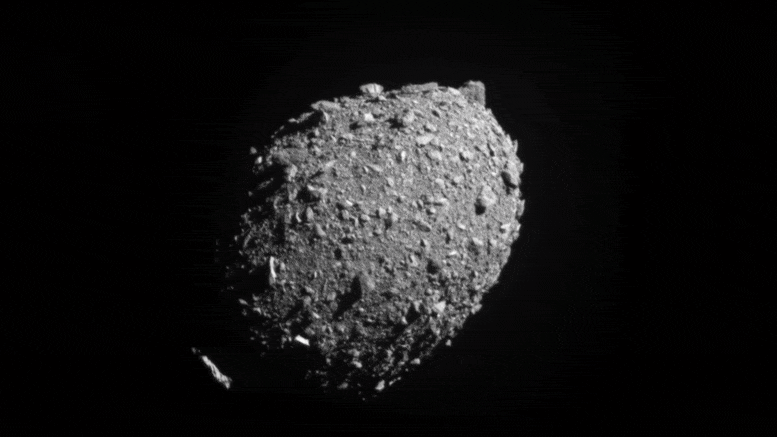
The final images leading up to the DART spacecraft’s intentional collision with asteroid Dimorphos. Credit: NASA/Johns Hopkins APL
NASA’s Double Asteroid Redirection Test (DART) successfully impacted its asteroid target Dimorphos on Monday, September 26, 2022, after 10 months of flying through space. It was the world’s first planetary defense technology demonstration and NASA’s first attempt to move an asteroid in space. The 1,260-pound (570-kilogram) spacecraft was flying at a speed of about 14,000 miles (22,530 kilometers) per hour at the time of impact.
During the spacecraft’s final moments before impact and obliteration, its Didymos Reconnaissance and Asteroid Camera for Optical navigation (DRACO) imager took four images capturing its terminal approach as its asteroid target Dimorphos increasingly filled the field of view.
This video shows the final five-and-a-half minutes of images leading up to the DART spacecraft’s intentional collision with asteroid Dimorphos. As it approached the asteroid, the DART spacecraft streamed these images from its DRACO camera back to Earth in real time. This replay movie is 10 times faster than reality, except for the last six images, which are shown at the same rate that the spacecraft returned them. Both Didymos and its moonlet Dimorphos are visible at the start of the video. At the end, Dimorphos fills the entire field of view. The final image in the movie shows a patch of Dimorphos that is 51 feet (16 meters) across. DART’s impact occurred during the transmission of the final image to Earth, resulting in a partial picture at the end of this movie. Didymos is roughly 2,500 feet (780 meters) in diameter; Dimorphos is about 525 feet (160 meters) in length. Credit: NASA/Johns Hopkins APL
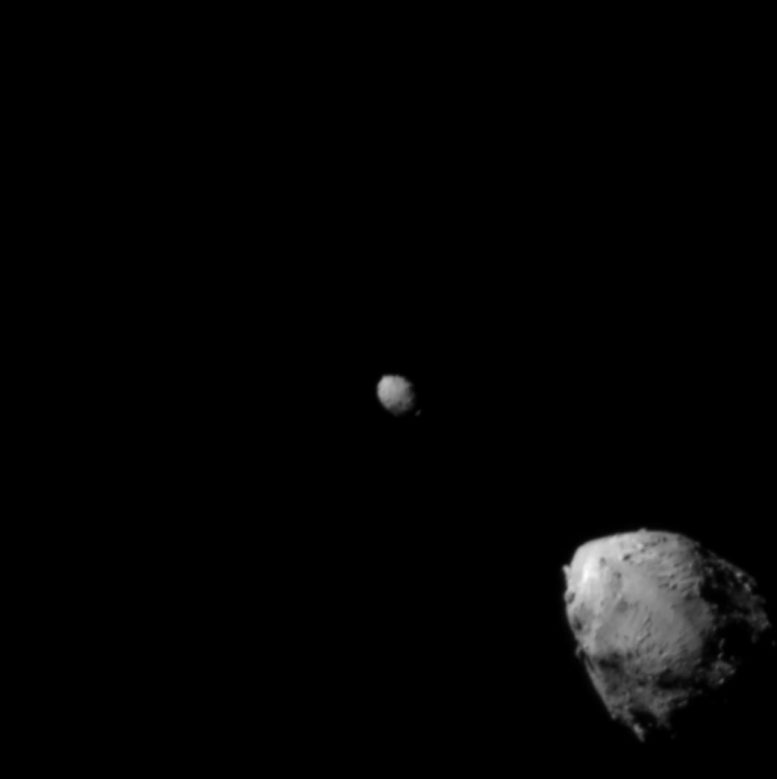
Asteroid Didymos (top left) and its moonlet, Dimorphos, about 2.5 minutes before the impact of NASA’s DART spacecraft. The image was taken by the onboard DRACO imager from a distance of 570 miles (920 kilometers). This image was the last to contain a complete view of both asteroids. Didymos is roughly 2,500 feet (780 meters) in diameter; Dimorphos is about 525 feet (160 meters) in length. Didymos’ and Dimorphos’ north is toward the top of the image. Credit: NASA/Johns Hopkins APL
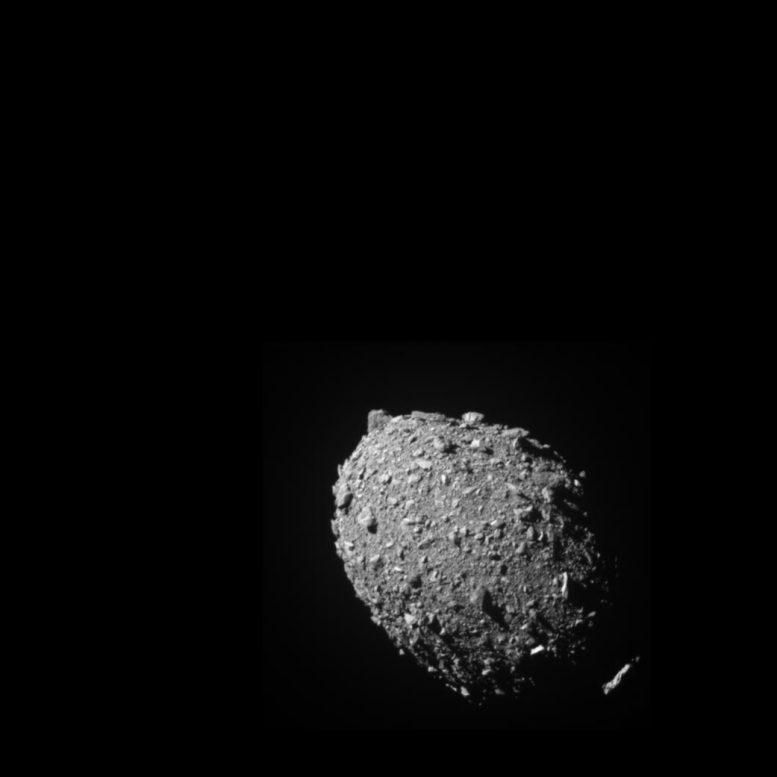
Asteroid moonlet Dimorphos as seen by the DART spacecraft 11 seconds before impact. DART’s onboard DRACO imager captured this image from a distance of 42 miles (68 kilometers). This image was the last to contain all of Dimorphos in the field of view. Dimorphos is roughly 525 feet (160 meters) in length. Dimorphos’ north is toward the top of the image. Credit: NASA/Johns Hopkins APL
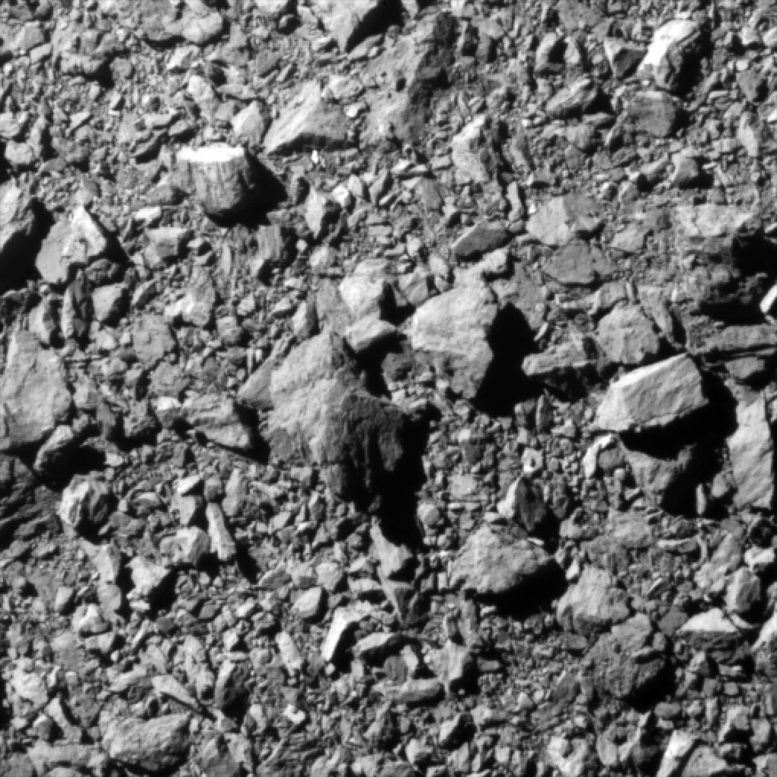
The last complete image of asteroid moonlet Dimorphos, taken by the DRACO imager on NASA’s DART mission from around 7 miles (12 kilometers) from the asteroid and 2 seconds before impact. The image shows a patch of the asteroid that is 100 feet (31 meters) across. Dimorphos’ north is toward the top of the image. Credit: NASA/Johns Hopkins APL
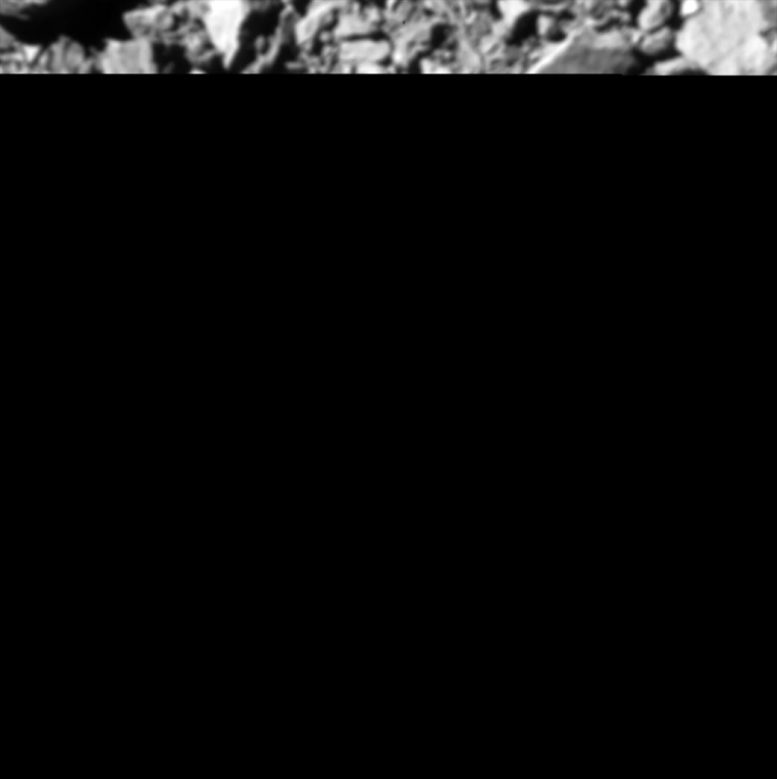
DART’s final look at the asteroid moonlet Dimorphos before impact. The spacecraft’s onboard DRACO imager took this final image approximately 4 miles (~6 kilometers) from the asteroid and only 1 second before impact. DART’s impact occurred during transmission of the image to Earth, resulting in a partial picture. The image shows a patch of the asteroid that is 51 feet 16 meters) across. Dimorphos’ north is toward the top of the image. Credit: NASA/Johns Hopkins APL
DART launched on November 23, 2021, from Space Launch Complex 4 East at Vandenberg Space Force Base in California on a SpaceX Falcon 9 rocket. Just two weeks after launch, the spacecraft has opened its “eye” and returned its first images from space. While DART was on the way, some of the world’s most powerful telescopes were used to check earlier calculations of the orbit of Dimorphos to confirm where the asteroid is expected to be located at the time of impact. On July 27, the spacecraft used its Didymos Reconnaissance and Asteroid Camera for Optical navigation (DRACO) to acquire its first image of Didymos, the double-asteroid system that includes its target, Dimorphos.

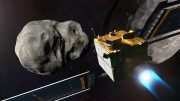
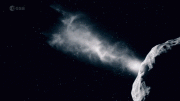
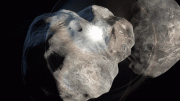

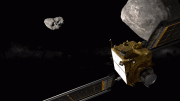
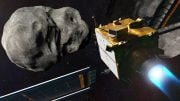
Be the first to comment on "See DART’s Final Images Before Asteroid Impact"